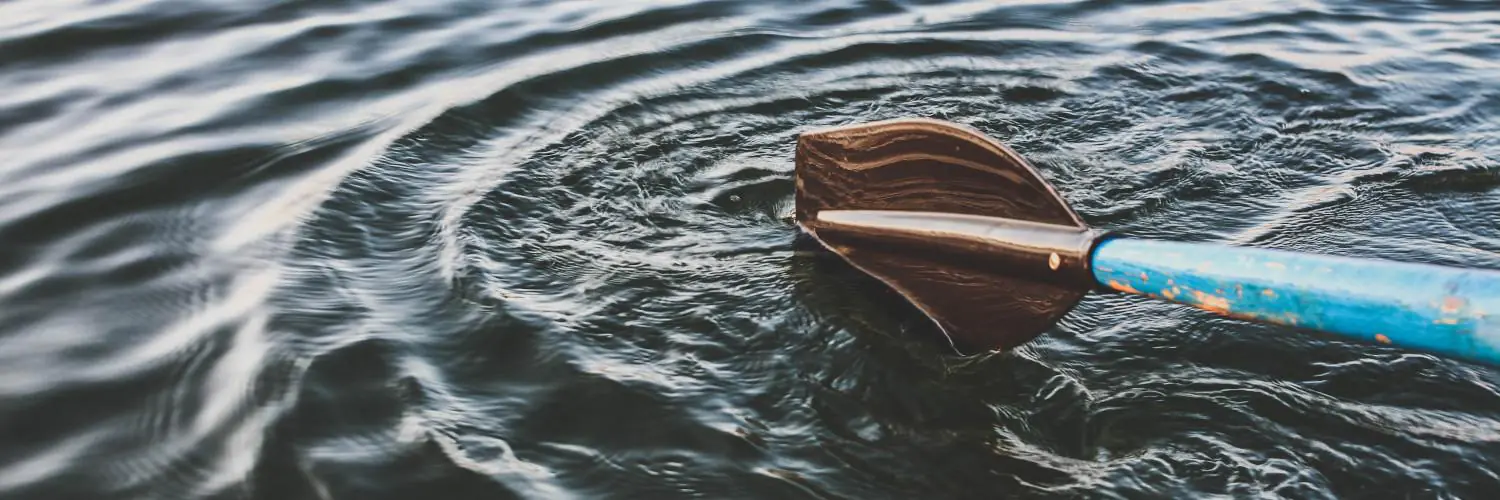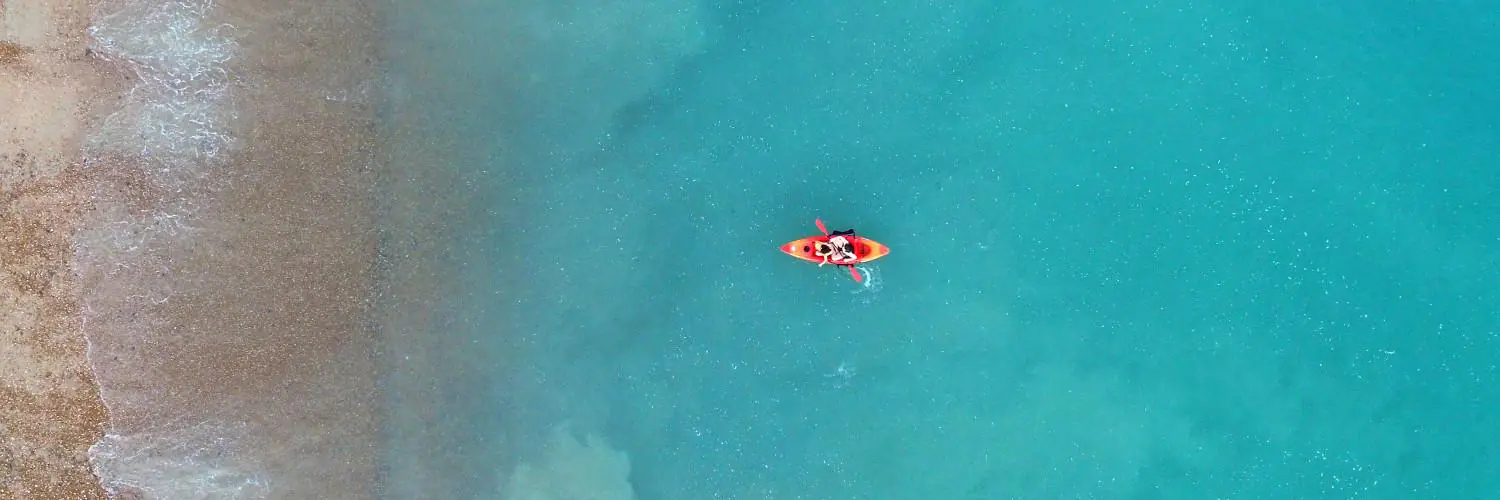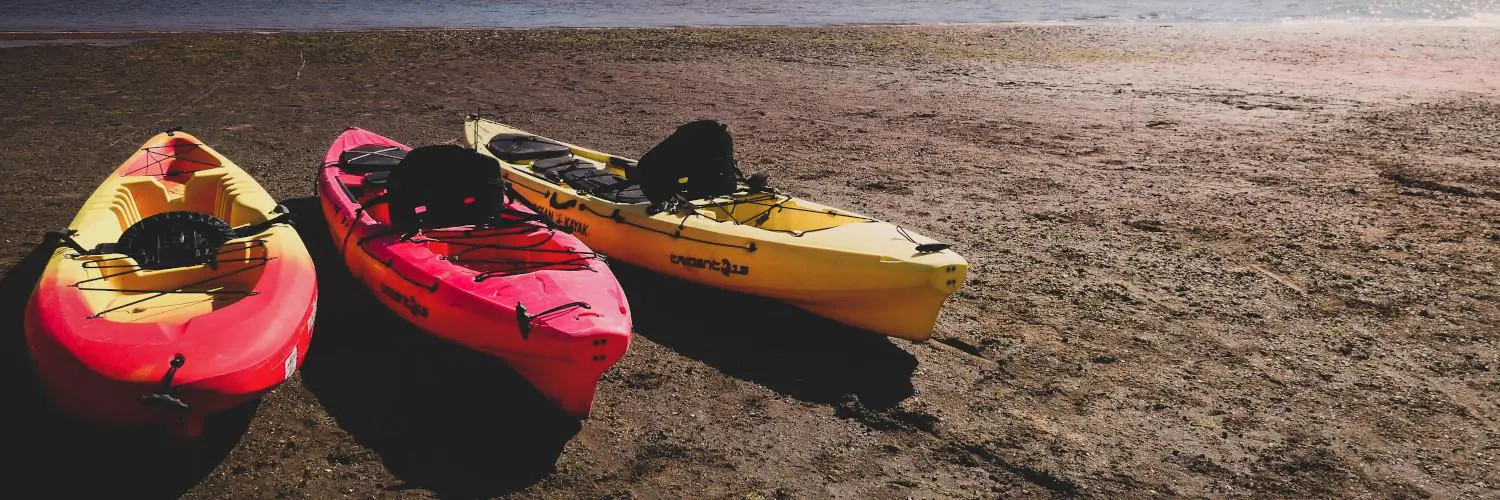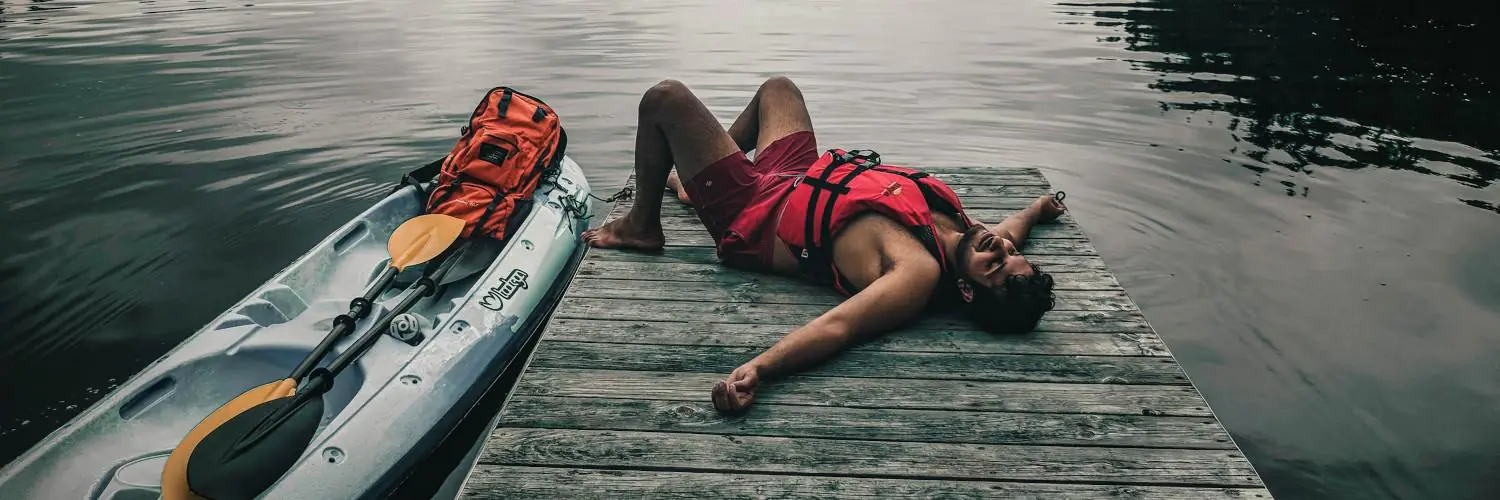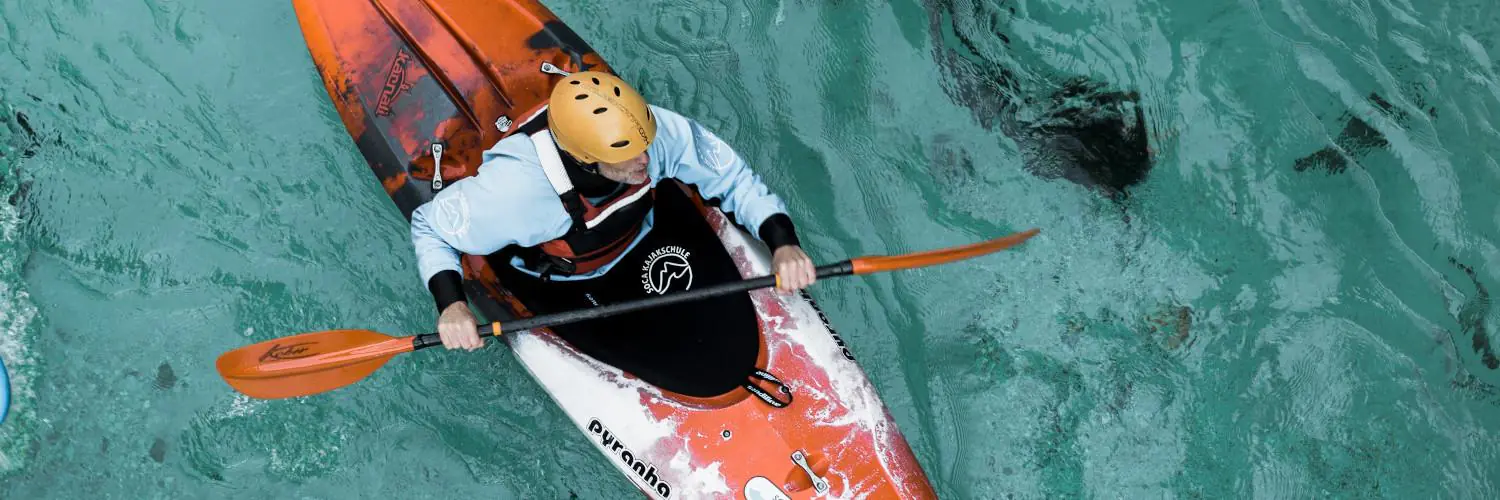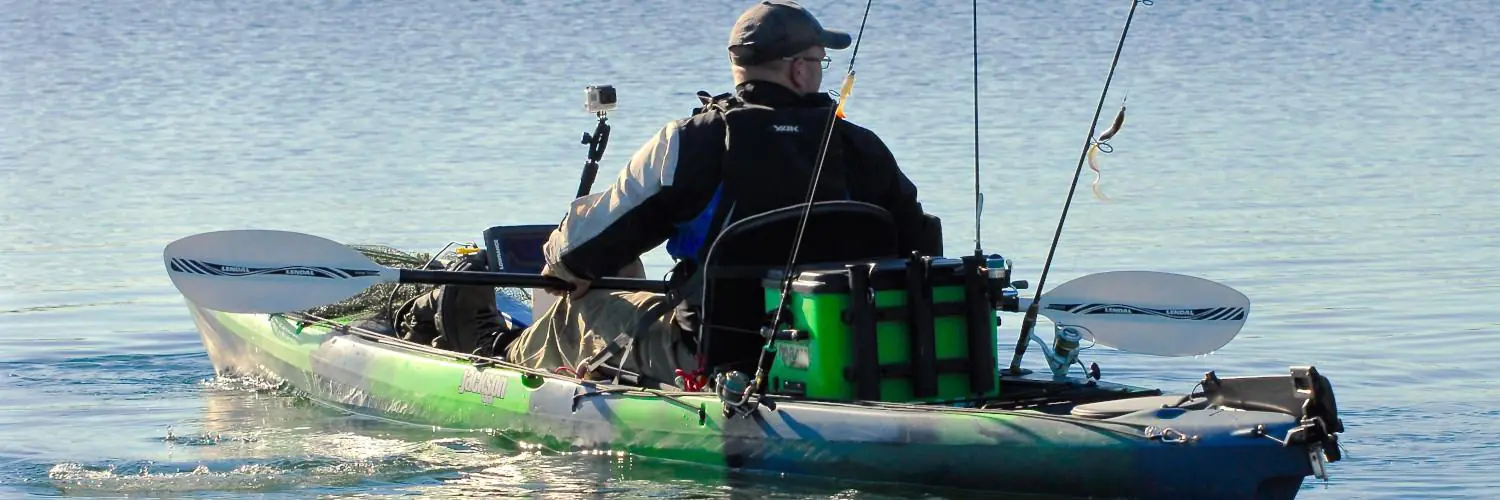A kayak hydrofoil is a cutting-edge design that fundamentally transforms the traditional kayaking experience. By integrating hydrofoil technology into the structure of a kayak, the hull can be lifted out of the water through the use of underwater wings known as hydrofoils. As the kayak gains speed, these hydrofoils create lift, reducing drag and allowing for far greater speeds than conventional kayaks. Capable of reaching impressive speeds, a kayak with hydrofoils, often referred to as a Flyak, can outpace standard models, offering a thrilling and efficient ride.
This innovation in the world of water sports was developed by designers such as Peter Ribe and Einar Rasmussen who sought to push the boundaries of speed on the water. The hydrofoil kayak has even led to broken records; for instance, a former racing champion beat the 1,000-meter world record by a significant margin using this technology. While these kayaks can attain speeds up to 27.2 km/h (16.9 mph) on calm waters, they also require skill and balance, as the mechanics of riding on hydrofoils differ markedly from traditional paddling techniques. The Flyak design includes twin hydrofoils that lift the boat out of the water, minimizing resistance and allowing for high-speed travel on water’s surface.
Table of Contents
History of Kayak Hydrofoils
The development of kayak hydrofoils can be traced to notable pioneers and distinct evolutions in design, marrying the kayak’s traditional form with hydrofoil technology.
Key Innovators
The realm of kayak hydrofoils saw significant contributions from Peter Ribe, who is considered a pivotal figure in advancing hydrofoil technology for kayaks. His contributions laid the groundwork for integrating hydrodynamics with kayak engineering. Another influential name in this field is Einar Rasmussen, a paraphernalia for innovation in kayaking, who also delved into the use of hydrofoils to enhance kayak performance.
Evolution of Design
Initially, hydrofoil designs for kayaks were basic and primarily experimental. As knowledge and technology progressed, so did the sophistication of hydrofoils. The integration of hydrofoils into kayaks has demanded meticulous alterations to the traditional kayak designs to accommodate new hydrodynamics. Early prototypes have given way to sleek, efficient forms that allow for higher speeds and better maneuverability. The progression from rudimentary models to advanced systems has reflected a significant leap in performance and utility.
Understanding Hydrofoil Technology
Hydrofoil technology in kayaks transforms the paddling experience by utilizing lift dynamics to elevate the kayak above water, reducing resistance. This section delves into the principles governing hydrofoils and the materials used in their construction.
Physics of Hydrofoils
Hydrofoils function by converting the kinetic energy of water into lift, enabling the kayak to rise above the surface. The design of the foils plays a crucial role in the handling and efficiency of the craft. As water flows over the hydrofoil’s wings, a pressure differential is created. The higher pressure beneath the wing compared to the lower pressure above it generates lift. The following key factors are instrumental in hydrofoil performance:
- Angle of Attack (AoA): The angle between the foil and the oncoming water flow affects the amount of lift generated.
- Aspect Ratio: Longer, thinner foils offer less drag and more stable lift, optimal for higher speeds.
- Shape and Size: The dimensions of the foil must harmonize with the kayak’s weight and the paddler’s power output to achieve the desired lift.
Materials and Construction
The construction of hydrofoils incorporates advanced materials to balance strength, buoyancy, and weight. The most common materials include:
- Carbon Fiber: Praised for its high stiffness and low weight, carbon fiber is widely used for high-performance hydrofoils.
- Aluminum: Offering a compromise between cost and performance, aluminum is durable and relatively lightweight.
- Fiberglass: Less expensive than carbon but heavier, fiberglass is an option for recreational users not prioritizing speed.
The structure of a hydrofoil typically consists of:
- Mast: The vertical component that connects to the kayak and extends to the foil.
- Wings: Horizontal surfaces that provide lift; front wings determine the majority of lift characteristics, while rear wings (stabilizers) afford balance.
- Fuselage: The fuselage links all components together, ensuring structural integrity.
Manufacturers design hydrofoils considering their application, paddler skill level, and water conditions to optimize performance.
Types of Kayak Hydrofoils
Kayak hydrofoiling introduces a new dimension to paddling, providing lift and a unique gliding sensation. This section details the distinctions between flat and curved foils, as well as discusses the components of full hydrofoil systems for kayaks.
Flat vs. Curved Foils
- Flat Foils: These are less common in kayak hydrofoiling. Flat foils provide lift but are less efficient at higher speeds where stability can become an issue. They are straightforward in design, with a simpler lift profile ideal for lower-speed applications.
- Curved Foils (often associated with flyak): Curved or dihedral foils offer more lateral stability and control. The curvature allows for self-stabilization as the kayak tilts, making them preferable for dynamic water conditions and higher speeds.
Full Hydrofoil Systems
Full Hydrofoil Systems for kayaks typically consist of:
- Strut (Mast): Connects the kayak to the foil, varying in length to accommodate different water depths and activities.
- Wings (Front and Rear): Determine the lift and drag characteristics. Larger front wings provide more lift at lower speeds, while smaller wings are designed for speed and agility.
- Fuselage: Connects the wings and the mast, and its length can affect the performance in terms of stability and maneuverability.
Benefits of Hydrofoiling
Hydrofoiling in kayaking offers tangible improvements in terms of performance on the water. These benefits hinge on enhanced speed and efficiency, combined with superior handling in a variety of water conditions.
Speed and Efficiency
Speed: A hydrofoil allows kayaks to achieve greater speeds by lifting the hull above the water. This reduces contact with the water surface, significantly decreasing drag. The reduced resistance enables faster travel with less effort.
- Drag reduction: Hydrofoils reduce the wetted surface area, which leads to lower frictional drag.
- Lift generation: As speed increases, hydrofoils produce lift, supporting the weight of the kayak and reducing the energy needed to maintain speed.
Efficiency: This lift-induced speed comes with heightened efficiency. Kayakers can cover longer distances without expending extra energy, making hydrofoiling an efficient option for longer routes.
- Fuel mileage: In motorized kayak hydrofoils, less drag equates to improved fuel efficiency, extending the range of travel.
Handling in Various Water Conditions
Rough Water: Hydrofoil-equipped kayaks excel in choppy conditions. By lifting above the water, hydrofoils can glide over waves and turbulent water, providing a smoother and more stable ride.
- Smooth Ride: The elevation above the surface reduces impacts from waves, leading to a more comfortable experience.
- Stability: The structure of the hydrofoil can contribute to improved balance and control, which is particularly beneficial in rough water.
Maneuverability: The improved stability and reduced drag also aid in handling and control. Kayakers find turning and navigating through diverse water landscapes easier with the agility provided by hydrofoils.
- Responsive control: Hydrofoils respond quickly to paddler inputs, making sharp turns and quick adjustments more manageable.
Kayak Hydrofoil Design and Safety
The design of a kayak hydrofoil requires meticulous attention to both aerodynamics for efficiency and safety features to protect the user. These aspects are crucial for the performance and reliability of the hydrofoil system.
Aerodynamic Considerations
Hull Shape: A hydrofoil kayak typically has a sleek and narrow hull design. This shape reduces drag and allows for smoother transitions to hydroplaning states. The hull must be tough enough to withstand the stress of lift-off and landing while maintaining aerodynamic integrity.
Foil Configuration: The hydrofoil comprises the foil head, mast, fuselage, front wing, and stabilizer. Each component is designed to interact seamlessly to generate lift and provide stability at speed.
| Component | Function |
|---|---|
| Foil Head | Connects the hydrofoil system to the kayak |
| Mast | Supports the foil wings while cutting through water |
| Fuselage | Offers rigidity and stability to the structure |
| Front Wing | Produces the primary lift, size, and shape impact performance and agility |
| Stabilizer (Rear Wing) | Balances the front wing, controls pitch, and aids in maneuverability |
Safety Features
Personal Flotation Devices (PFDs): It is imperative for users to wear PFDs at all times. The inherent risks of capsizing or falling overboard necessitate this safety measure.
Durable Materials: Manufacturers use materials such as carbon fiber or reinforced composites for their strength-to-weight ratio, ensuring the hydrofoil sustains the forces it might encounter.
Break-Away Systems: Some hydrofoil kayaks are equipped with a break-away system that detaches the foil from the hull during a collision or capsize, reducing the risk of injury.
Training and Experience: Riders should possess adequate training and experience before handling a kayak hydrofoil to ensure they have the skills required to operate these vessels safely.
Kayak Hydrofoil in Sports and Recreation
Kayak hydrofoils have revolutionized water sports by offering faster speeds and a new level of excitement for enthusiasts. They cater to competitive racing as well as provide a unique recreational experience for those seeking a blend of leisure and fitness.
Surfing and Racing
Kayak hydrofoils, or flyaks, are used in competitive sports where speed is paramount. These hydrofoil kayaks have enabled athletes to break records due to the hydrofoil’s ability to lift the kayak above the water, reducing drag significantly. For instance, speed improvements have been observed in the 1,000-meter race, with hydrofoil kayaks surpassing previous world records.
- Record Performance: A racer significantly improved upon the world record time by completing a 1,000-meter race in under 3 minutes, outpacing the earlier record by 27 seconds.
When used for surfing, hydrofoils allow the kayak to glide over the water and waves with greater control and velocity. Lakes and coastal areas in the United States have seen a growing interest in hydrofoil surfing, merging the adrenaline of surfing with the challenge of kayaking.
Leisure and Fitness
For those who are not competitively inclined, hydrofoil kayaks provide an engaging way to enjoy the water for leisure and fitness purposes. The lifting effect of the hydrofoil allows for smoother rides on various bodies of water including, but not limited to, calm lakes. This reduction in drag not only makes it less strenuous to paddle over longer distances but also offers a new dimension to a traditional workout regimen.
- Ease of Use: On lakes, hydrofoil kayaks offer a relatively easy learning curve for new enthusiasts seeking an alternative to traditional kayaking.
- Workout Benefits: Engaging a multitude of muscle groups, hydrofoil kayaking serves as a full-body workout that improves balance, strength, and cardiovascular health.
Hydrofoil kayaks have broadened the possibilities within the realm of water sports, catering to the performance-driven demands of racing while offering substantial benefits for leisurely adventures and physical fitness.
Accessibility and Maintenance
Proper installation and regular maintenance are critical for ensuring that a kayak hydrofoil remains accessible and operates effectively. These practices directly affect the hydrofoil’s performance and durability.
Installation and Storage
When it comes to installation, a kayak hydrofoil system typically requires precise mounting to the hull of the kayak. This process demands attention to detail to ensure optimal performance on the water. Most systems come with a detailed manufacturer’s instruction guide, which should be followed carefully to avoid any mishaps.
For storage, kayak hydrofoil users should invest in a specialized rack or mounting system to keep their equipment safe and undamaged when not in use. The choice of a rack can depend on the space available and the price range one is comfortable with. Racks help prevent the foils from getting bent or otherwise damaged, which could affect performance or necessitate costly repairs.
- Recommended Storage Solutions:
- Wall-mounted racks: For space efficiency
- Freestanding racks: For ease of access
Care and Longevity
Care for a kayak hydrofoil involves meticulous cleaning and inspection after each use. Users must rinse the hydrofoil with freshwater to remove salt, dirt, and debris. This step is essential to prevent corrosion or buildup that can impede the performance of the foils.
To ensure longevity, every part of the kayak, including paddles, should be dried thoroughly before storage to prevent mold or mildew. Paddles, especially if they are adjustable or can be taken apart, need regular maintenance to ensure that all moving parts function correctly.
- Maintenance Checklist:
- Rinse hydrofoils with freshwater
- Inspect for damage or wear
- Dry all equipment thoroughly
- Clean and lubricate moving parts on paddles
By adhering to a strict maintenance regimen and choosing proper storage solutions, users can extend the life of their kayak hydrofoil and enjoy a high level of performance during each outing.
Community and Resources
In the realm of kayak hydrofoiling, enthusiasts and newcomers alike will find a treasure trove of support and inspiration from both local clubs and various online platforms. These hubs not only facilitate knowledge exchange but also provide practical advice and showcase hydrofoil kayaking techniques through videos and interactive discussions.
Local Clubs and Venues
Local clubs function as the bedrock of hydrofoil kayaking communities. They offer structured opportunities for members to participate and improve through organized events and personal interaction. One will typically find that these clubs have access to suitable venues where the water conditions are apt for hydrofoil kayaking. Experienced members often volunteer to guide beginners in mastering the balance and techniques required for hydrofoiling:
- Access Points: Many clubs have exclusive or preferred access to specific water bodies. These venues are chosen for their calm waters, which are essential for hydrofoil kayaking.
- Training Events: Regular training sessions and workshops hosted at these venues help individuals learn and refine hydrofoiling skills.
Online Groups and Videos
The internet is a valuable resource for those interested in hydrofoil kayaking. Online groups on social media and forums bring together enthusiasts from all over the world, providing a platform to share experiences and offer advice.
- Instructional Videos: Platforms like YouTube are rich in content, displaying everything from the basics of hydrofoil kayak construction to advanced maneuvering techniques.
- Community Support: Online groups on platforms like Facebook and dedicated forums offer peer support and discussions that are critical for troubleshooting and learning.
| Platform | Purpose | Features |
|---|---|---|
| YouTube | Watching tutorials and demonstrations | Extensive variety of hydrofoil kayaking videos |
| Facebook Groups | Community interaction and support | Real-time discussions, Q&A, and event coordination |
| Specialized Forums | Deep-dive into hydrofoiling topics | Detailed threads on techniques, equipment, and modifications |


